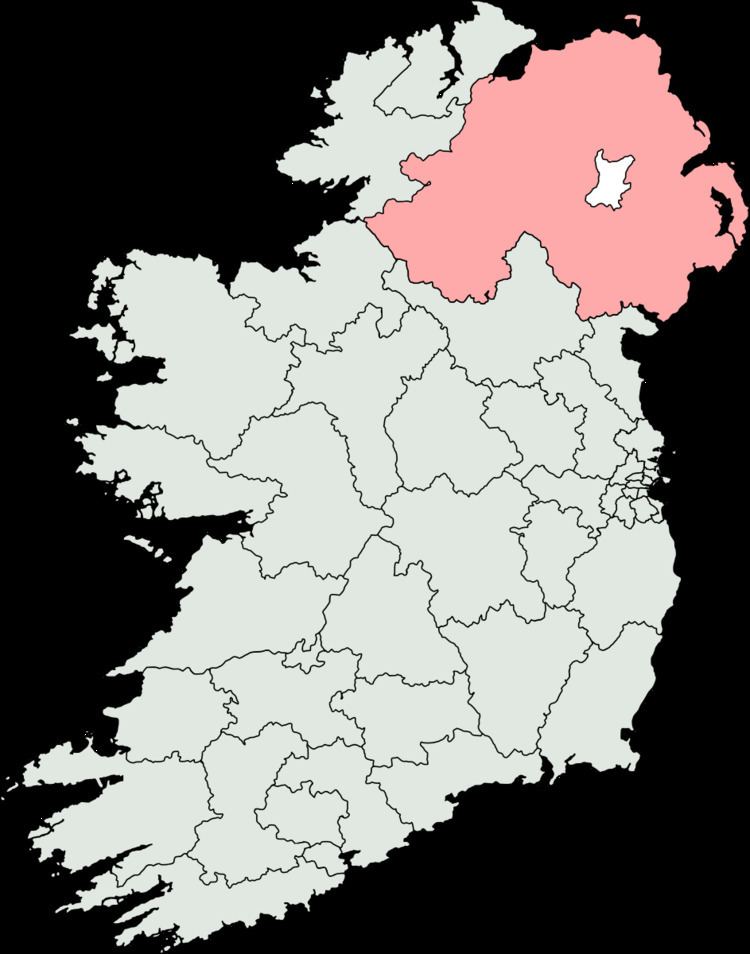General 2011
2016
Next Local 2004
2009
2014 | Presidential 1997
2004
2011 European 2004
2009
2014 | |
 | ||
There are currently 40 multi-member constituencies, that democratically elect 158 Teachtaí Dála (members of parliament, often shortened to TDs), to Dáil Éireann (Ireland's lower house), usually every five years. Article 16.2 of Bunreacht na hÉireann (the Irish Constitution) sets out how these electoral districts should be created by law using population figures recorded in the census of Ireland. Census reports are published every four years and are produced by the Central Statistics Office in Ireland. The Constitution stipulates that there will be no more than one TD representing twenty thousand and no less than one TD representing thirty thousand of the population, and from that constituencies should be amended by law to maintain these proportions and prohibit malapportionment. In order to avoid allegations of gerrymandering and to preserve the democratic integrity of the Dáil, the Constituency Commission was set up with the enactment of the Electoral Act 1997. The commission is independent and is responsible for the redrawing of constituency boundaries. Members of the five person commission must be a Judge of the Supreme Court or High Court as the Chairman, the Clerk of the Dáil, the Clerk of the Seanad, the Ombudsman, and the Secretary General of the Department of the Environment, Community and Local Government. The constitution directs members of the Oireachtas (Irish legislature) which include, Uachtarán na hÉireann (President of Ireland), Dáil Éireann (Ireland's lower house) and Seanad Éireann (Ireland's upper house) to revise the constituencies at least every twelve years and in the event of any constituency changes required, then this should not occur during the life of the sitting Dáil. Proportional representation by means of a single transferable vote is the electoral system specified to be applied in all general elections to Dáil Éireann. While this system differs from by-elections for Dáil Éireann and elections for Uachtarán na hÉireann, which apply alternative vote, it is similarly applied in European Parliament Elections. The constitution specifies that the minimum number of TDs returned for each constituency can be no less than three, however it does not define the maximum number. To circumvent this anomaly, the Electoral Act 1997 was enacted, where Section 6 of the statute places a maximum size of five members on constituencies. This means that the number of TDs elected from each constituency during a general election in Ireland may differ from three, four and five depending on the population in that district. The most recent changes to the constituency boundaries came about following the release of the population figures in the 2011 census. This resulted in the Constituency Commission proposing changes in 2012 to the constituency map of Ireland so as to reduce the total number of TDs from 166 to 158, and the constituencies from 43 to 40. The Electoral (Amendment) (Dáil Constituencies) Act 2013 provided for this change and for changes to constituencies. The 2016 general election was the first time these changes in the constituencies of Ireland came into effect.
Contents
Changes for 2016 general election
In June 2012 the Constituency Commission proposed changes to the constituency map of Ireland so as to reduce the total number of TDs from 166 to 158 and the constituencies from 43 to 40. The Electoral (Amendment) (Dáil Constituencies) Act 2013 provided for this change and for changes to constituencies.
2011 constituencies
For the 2011 general election, 166 TDs were elected from the following 43 constituencies:
2011 general election
The 2007 report of the Constituency Commission, an independent body established by the Government of Ireland to review constituency boundaries, proposed several changes to Dáil constituencies. These changes were provided for by the Electoral (Amendment) Act 2009. In July 2011 the Irish government established a commission to review to the current Dáil and European constituencies.
This table summarises the changes in representation. It does not address revisions to the boundaries of constituencies.
There were further boundary changes to 18 constituencies, these were: Cork East, Cork North-Central, Cork North-West, Donegal North-East, Donegal South-West, Dublin North, Dublin North-Central, Dublin North-East, Dublin South, Kerry South, Kildare North, Kildare South, Laois–Offaly, Meath East, Meath West, Roscommon–South Leitrim, Sligo–North Leitrim and Tipperary North.
2007 general election
In 2004 the report of the Constituency Commission, proposed major changes to Dáil constituencies. Five new constituencies were created under the Electoral (Amendment) Act 2005:
These replaced the four existing constituencies of Longford–Roscommon, Meath, Sligo–Leitrim and Westmeath. These new changes resulted in the creation of a 43rd constituency and the removal of the provincial boundary breach between Leinster and Connacht.
The number of seats was reduced in two constituencies:
Two three-seater constituencies gained an extra seat:
There were further smaller boundary changes to eleven constituencies outside Dublin, these were: Clare, Cork North-West, Cork South-Central, Cork South-West, Donegal North-East, Donegal South-West, Kerry North, Kerry South, Kildare South, Limerick East and Limerick West.
Boundaries for ten of the twelve Dublin constituencies were also revised apart from Dublin South-East and Dún Laoghaire.
